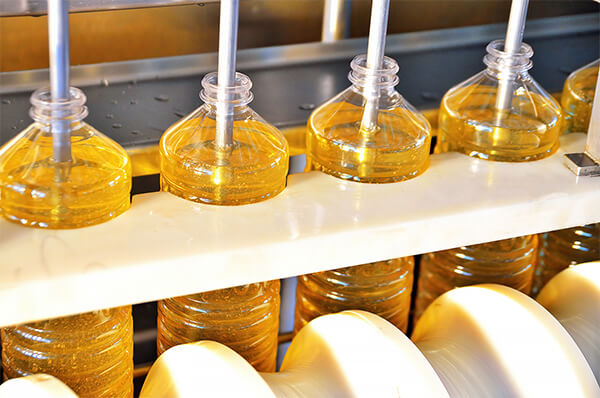Water Sustainability at OilSeed Plants

Every oilseed plant has to deal with wastewater. Once the water has been used to degum and scrub, clean equipment, and wash off trucks where does it go? Before your wastewater can be released down the drain, you’re responsible for evaluating and monitoring the contents of the water. Failure to do so can result in extra costs or notices of violation. What is the process for analyzing and properly treating wastewater? This article explores the topic of water footprint sustainability in the wastewater process at Oilseed plants but also applies to other Food-processing plants dealing with Fats, Oils and Grease (FOG).
Typical Oilseed Plant Wastewater
Typically, the process wastewater from an oilseed plant comes mainly from the refinery—degumming, scrubbing, and floor drains. This accounts for an average 90% of the wastewater produced. Up to 10% comes from the crush and extraction process, and depending on the plant, up to 5% of the wastewater comes from other sources such as storm water, condensate, and spills.
The main regulated constituents in wastewater are the pH range, the content of suspended solids (TSS), fats and oils (FOG), and organics (BOD/COD). The pH cannot be too acidic, as it can damage pipes and systems. Suspended solids, fats, and oils are regulated because they can clog pipes, in addition to impacting marine life. While treatment plants like having some organics in the wastewater, too much can impact the microbial content in the water treatment facility. In technical terms, pH must fall between 6 and 10 SU, suspended solids must have a monthly average no greater than 500 milligrams per liter, and oils and fats must average out to 200 milligrams per liter.
If pH, organics, or suspended solids are detected in excess, municipalities will add a surcharge. If oils and fats are found in excess, however, the plant will receive a notice of violation.
To get an accurate picture of the wastewater coming from a plant, a wastewater profile should include both the average flow from various sources and the maximum flow.
Permitting and Geographic Considerations
Solution Development Approach
In developing a system to deal with wastewater, there are multiple steps to work through. The first is a flow balance: how much water is the company using, from start to finish? A constituent analysis will need to be performed to analyze how that water is being used, and what it contains. The next step in developing a solution is process improvement. This step helps identify how a plant can reduce the amount of water it’s using, in order to reduce the amount of wastewater that will need to be processed. Another step is segregating streams; looking at the streams coming from each part of the plant to identify any individual improvements that could be made. Next in the process, the plant needs to establish recycling goals. Is the company simply seeking to avoid surcharges? Would they like to go above and beyond the technical permitting requirements? Determining a plant’s wastewater reduction goals will help the engineering company understand what type of equipment is needed. The final step, then, is the actual design of the chemistry and equipment to help treat the wastewater.
Treatment for Discharge
What kind of treatment systems are used for wastewater? The untreated wastewater enters an EQ tank. Before moving on to any chemical steps, it may be possible to recover some of the oil still in the water, which can be retained for sale. After this, the wastewater enters another EQ tank, where it is run through DAF and treated with various chemicals. After receiving biological treatment, it is released. For companies wishing to further reduce their wastewater discharge load, a filter press can be added to the process.
Recycle/Reuse Considerations
What should a company consider when evaluating their recycling and reusing goals? Some important considerations are the characteristics of the wastewater, as well as the location of the plant. Is it close to a body of water? What external factors might be impacting the content of the wastewater? Seasonal variations is another important consideration—are there wastewater issues in winter that might not exist in the summer? Plants should also consider their sustainability goals, any future changes they’re looking to make, and what potential cost savings they could achieve.
Treatment for Recycling
If an oilseed processing plant wants to recycle its used wastewater, the process adds several steps. The water is cycled through several tanks, where it goes through a softening treatment, is carefully filtered, and has the solid waste removed through an evaporation and crystallization process.
Ultimately, the process for treating wastewater is one that requires careful consideration, analysis of multiple factors, and an evaluation of a plant’s sustainability goals. ADF Engineering can help at each step of the way, analyzing water, isolating sources, and engineering the proper equipment to achieve the wastewater treatment goals of a plant. We utilize industry best practices including an Excel add-on water pinch software to reduce your operation’s cost and waste.

Written By: Rakesh Patel
Posted on: August 13, 2021

